18 Breathtaking European Castles to Add to Your Travel List
European castles are more than just architectural wonders. They are living pieces of history. From ancient fortresses to palatial estates, these structures offer an unforgettable glimpse into the past. Stepping inside one of these castles is like entering a world of knights, kings, and centuries-old stories. The views alone will take your breath away, but the rich history behind each castle is equally captivating. Ready for your next adventure? These castles are waiting for you to explore.
This post may contain affiliate links, which helps keep this content free. Please read our disclosure for more info.
Neuschwanstein Castle (Germany)
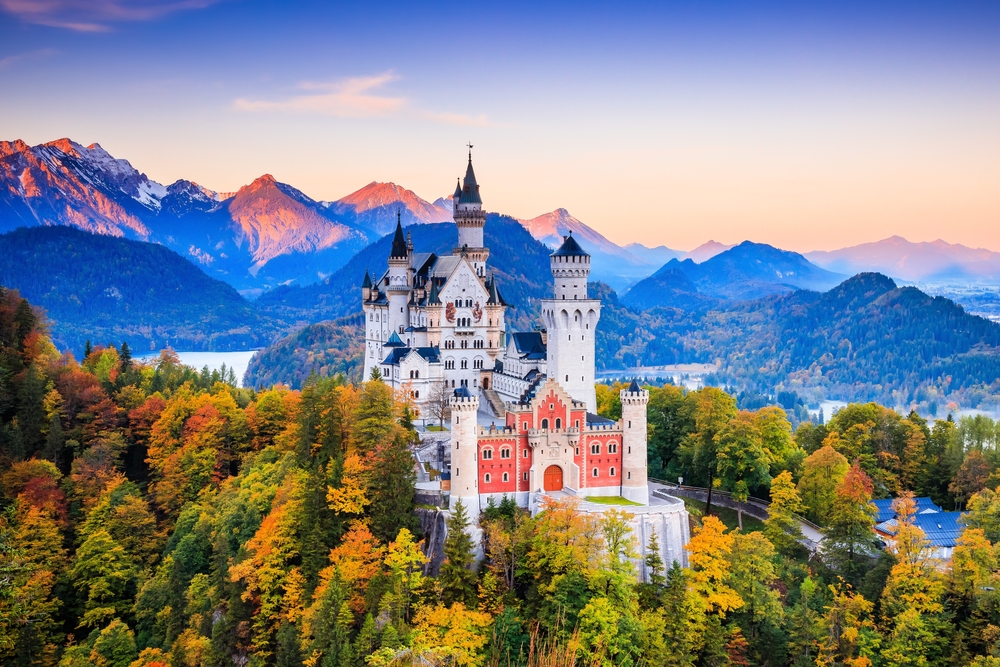
Neuschwanstein Castle is one of the most iconic castles in Europe, known for its fairy-tale appearance. Located in the Bavarian Alps, this 19th-century castle was built by King Ludwig II and completed in 1886. Its towering spires and picturesque surroundings have made it a popular tourist attraction. The castle is open to the public, and visitors can explore the interior and enjoy stunning views of the surrounding mountains and lakes.
The castle covers an area of about 60,000 square feet and features luxurious rooms, including the King’s bedroom and the Throne Room. It is one of the most photographed castles in the world and attracts millions of visitors each year. Neuschwanstein is accessible by a short hike or a horse-drawn carriage ride. It is a must-see destination for anyone visiting Germany.
Edinburgh Castle (Scotland)
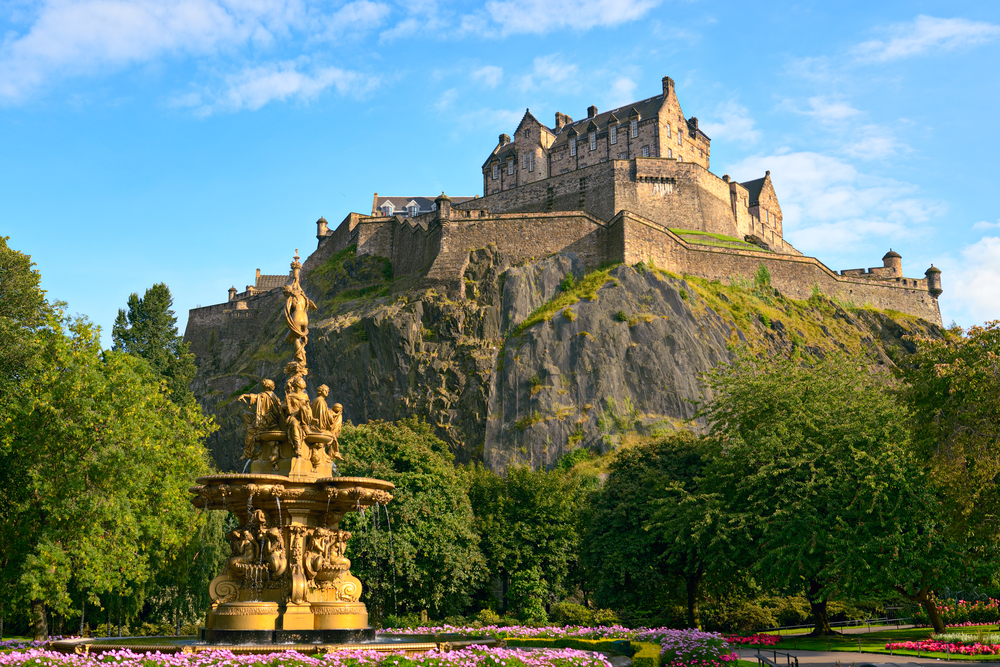
Located on a volcanic rock, Edinburgh Castle is a symbol of Scottish heritage and history. It has stood on Castle Rock since at least the 12th century, making it one of the oldest castles in Scotland. The castle is open to the public, offering visitors the chance to explore its museums, royal chambers, and military barracks. Visitors can also see the Crown Jewels of Scotland, housed within its walls.
The castle sits atop a steep hill, providing panoramic views of the city below. Its architecture reflects its long history, with various buildings dating from different centuries. Edinburgh Castle is one of the most visited paid tourist attractions in Scotland, drawing millions of visitors annually. It is a must-visit site for anyone interested in Scottish culture and history.
Chateau de Chambord (France)
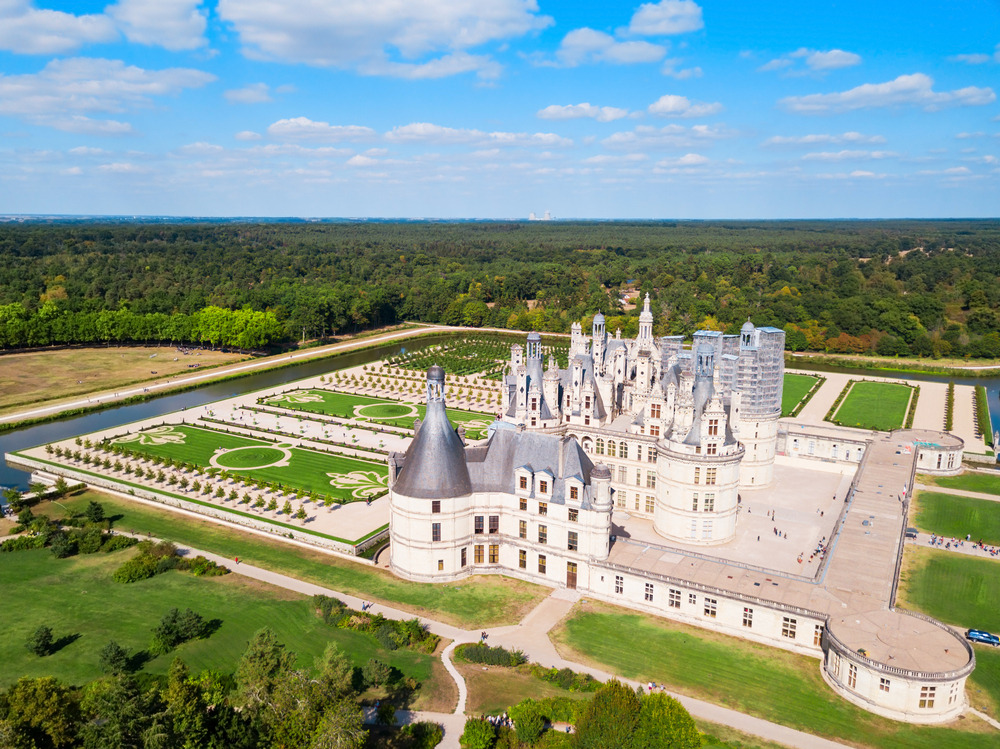
Chateau de Chambord is a masterpiece of the French Renaissance, located in the Loire Valley. Built between 1519 and 1547 by King François I, it is the largest castle in the Loire region. The castle is open to the public, allowing visitors to admire its distinctive French architecture, including its double-helix staircase. Its extensive grounds cover 5,440 acres, offering plenty of space for exploration.
Chambord’s architecture blends medieval forms with Renaissance innovations, making it one of the most unique castles in France. It is a UNESCO World Heritage Site and an important symbol of French royal history. The castle’s interior boasts over 440 rooms, and its towering spires are a sight to behold. It remains a popular destination for tourists in France.
Alhambra (Spain)

Located in Granada, Spain, the Alhambra is a stunning example of Islamic architecture, built during the 13th and 14th centuries. This castle-palace complex was originally constructed by the Nasrid dynasty and is renowned for its intricate tilework and beautiful gardens. Open to the public, the Alhambra draws visitors from around the world who are eager to explore its stunning courtyards and fountains. The Alhambra covers around 35 acres and includes several monumental structures.
The Alhambra’s most famous features are the Hall of the Ambassadors and the Patio de los Leones. The castle is a UNESCO World Heritage Site and a key part of Spain’s cultural heritage. Its location on a hill offers sweeping views of the surrounding city and the Sierra Nevada mountains. Visitors can walk through the gardens, admiring the harmony between nature and architecture.
Palace of Versailles (France)
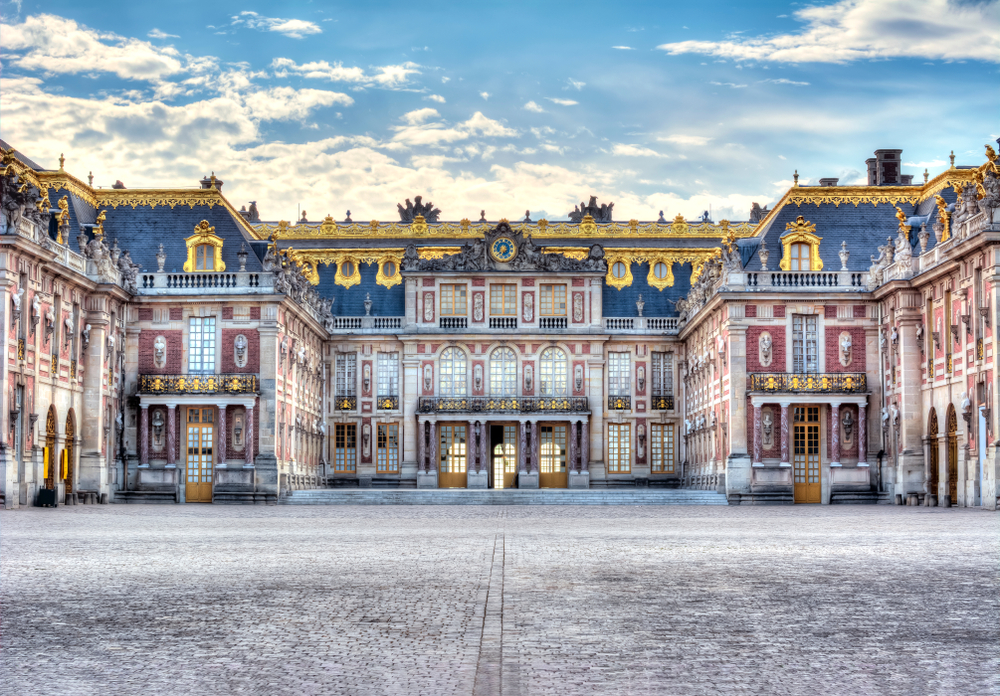
The Palace of Versailles, located just outside Paris, is a symbol of the absolute monarchy of the Ancien Régime. Built between 1661 and 1682 by King Louis XIV, it is famous for its grand architecture and opulent interiors. Open to the public, the palace features 2,300 rooms and beautiful gardens stretching over 800 hectares. It is one of the largest and most visited castles in France.
Versailles was originally a hunting lodge before it was expanded into a grand royal palace. Visitors can tour the Hall of Mirrors, where historic events like the signing of the Treaty of Versailles took place. The gardens, designed by André Le Nôtre, are as magnificent as the palace itself, featuring fountains, sculptures, and manicured lawns. The palace offers a glimpse into the life of the French monarchy before the Revolution.
Hohenwerfen Castle (Austria)
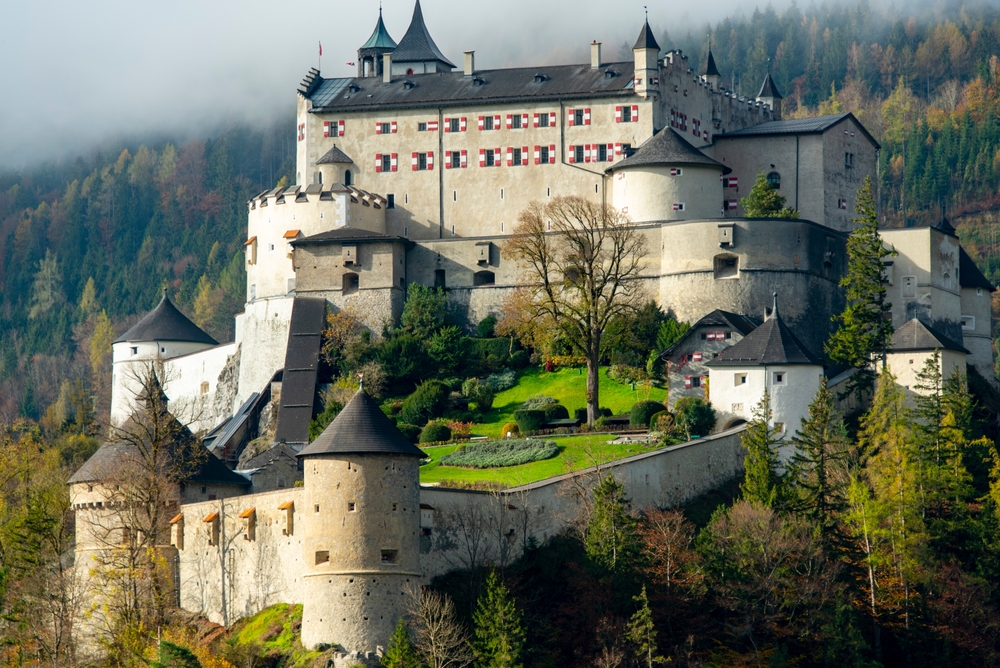
Hohenwerfen Castle is a medieval fortress perched on a rocky cliff above the Salzach River in Austria. Built in 1077, it served as a strategic military stronghold and royal residence. Today, the castle is open to the public and offers guided tours, showcasing its rich history and impressive architecture. The castle is known for its well-preserved condition and stunning views of the surrounding Alps.
The castle includes a large courtyard, a chapel, and a falconry display, where visitors can see demonstrations of birds of prey. It is located about 40 kilometers south of Salzburg, making it an easy day trip from the city. The castle covers several floors, and the ramparts offer breathtaking views of the surrounding landscape. It is a hidden gem for those looking to experience Austria’s medieval history.
Buda Castle (Hungary)
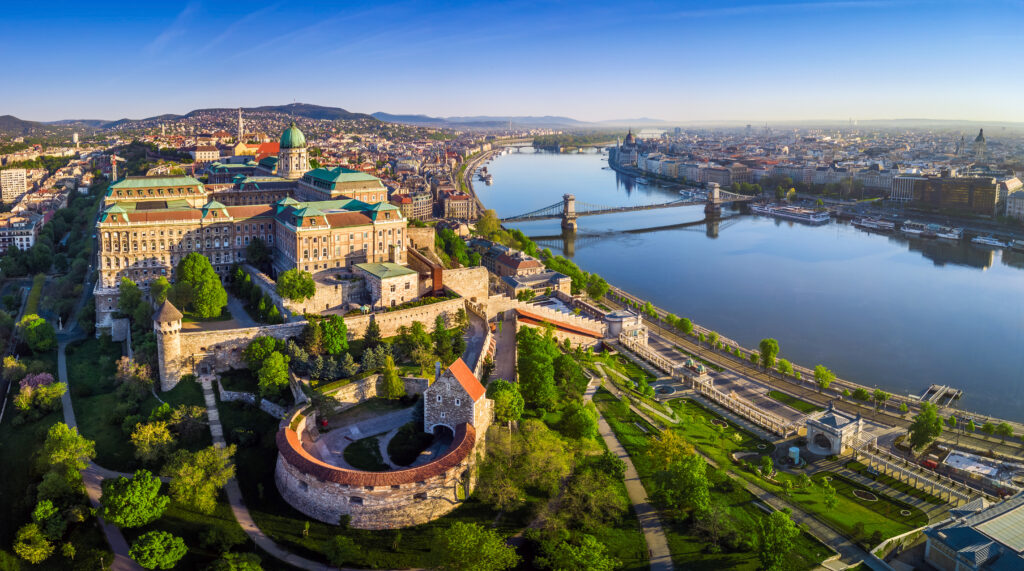
Located in Budapest, Buda Castle is a historic castle and palace complex that has stood since the 13th century. It was the residence of Hungarian kings and is now a UNESCO World Heritage Site. The castle is open to the public, with various museums, galleries, and exhibitions housed within its walls. Visitors can also explore the Royal Palace and enjoy the panoramic views of the Danube River.
Buda Castle covers a vast area, including the Royal Garden and a network of tunnels beneath the hill. It has been expanded and renovated over the centuries, with different architectural styles reflecting its long history. The castle’s impressive walls and towers make it a remarkable sight, especially when lit up at night. It is one of the most visited attractions in Budapest, offering both history and stunning views.
Blarney Castle (Ireland)
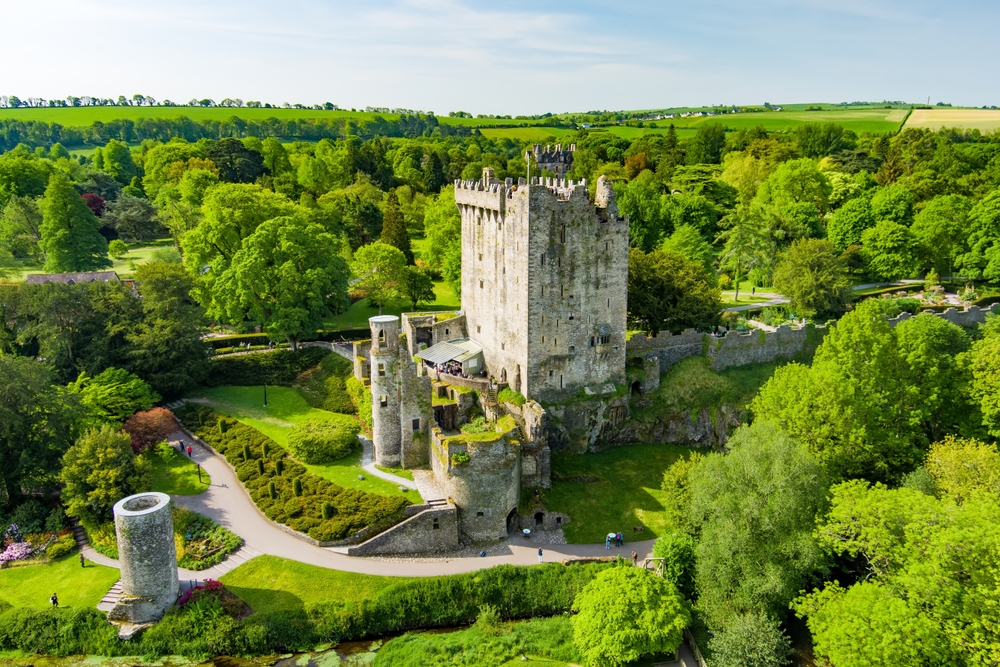
Blarney Castle, located in County Cork, is famous for the Blarney Stone, which is said to grant the gift of eloquence. Built in the 15th century, the castle is open to the public and attracts thousands of visitors each year. Visitors can climb to the top of the castle and kiss the Blarney Stone, an unforgettable experience. The castle’s grounds also feature beautiful gardens, including the Poison Garden and the Rock Close.
Blarney Castle was originally a wooden structure before being rebuilt in stone in the 1400s. The castle is not particularly large but offers a rich experience for those interested in history and Irish folklore. It is located just a short drive from Cork city, making it an easily accessible destination. Blarney Castle remains one of Ireland’s most beloved landmarks.
Prague Castle (Czech Republic)
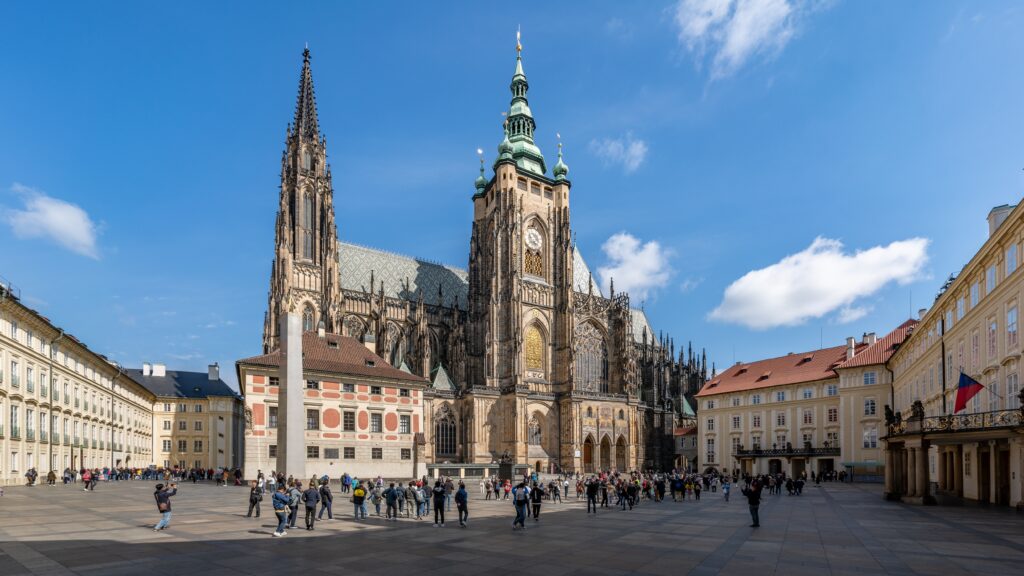
Prague Castle is the largest ancient castle in the world, occupying an area of about 70,000 square meters. Built in the 9th century, it has served as the seat of the kings of Bohemia and later the presidents of Czechoslovakia. The castle is open to the public and includes a variety of attractions, including St. Vitus Cathedral and the Old Royal Palace. It is located on a hill overlooking the Vltava River and offers fantastic views of Prague.
The castle complex contains numerous palaces, churches, gardens, and museums. It is a UNESCO World Heritage Site and one of the most visited landmarks in the Czech Republic. Visitors can walk through the Golden Lane, a narrow street where medieval artisans once lived. Prague Castle is an iconic part of the city and a must-visit for any traveler to the Czech Republic.
Dunnottar Castle (Scotland)
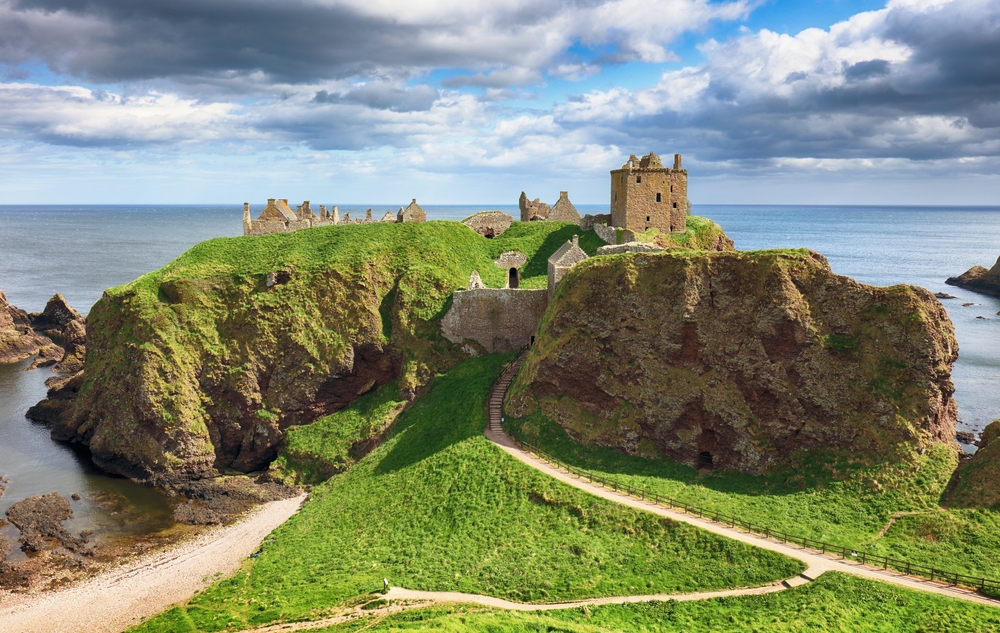
Dunnottar Castle, perched on a dramatic cliff overlooking the North Sea, is a historic fortress in Aberdeenshire, Scotland. Built during the 14th century, it served as a stronghold for Scottish royalty and was involved in several key historical events. The castle is open to the public, and visitors can explore the ruins, including the great hall and the tower. Its remote location adds to the castle’s mystique and beauty.
Dunnottar Castle offers spectacular views of the sea and surrounding coastline, making it a popular destination for photographers and history enthusiasts. Although it is a ruin today, its impressive location and history make it one of the most scenic castles in Scotland. The castle is easily accessible by foot from a nearby car park, making it a perfect day trip for those exploring the Scottish coast.
Castel del Monte (Italy)
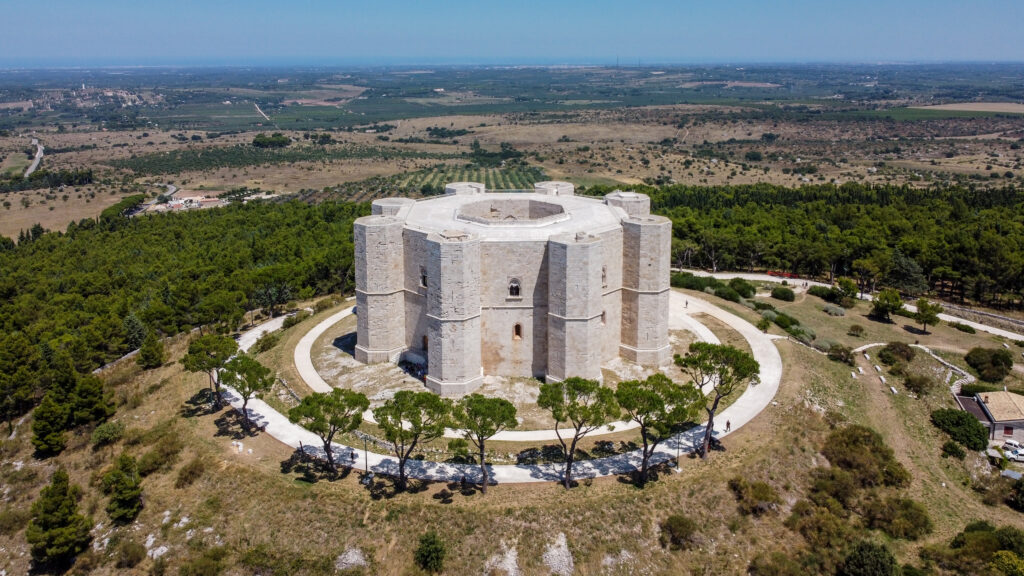
Castel del Monte, located in the Apulia region of Italy, is a unique castle known for its octagonal shape. Built in the 13th century by Emperor Frederick II, the castle is a masterpiece of medieval architecture. It is open to the public, offering a chance to explore its symmetrical design and stunning views of the surrounding countryside. The castle’s unusual design has made it a UNESCO World Heritage Site.
The castle has eight corners and eight towers, which are aligned with astronomical and geographical precision. It stands on a hilltop, providing visitors with a panoramic view of the surrounding plains. Castel del Monte is one of Italy’s most mysterious castles, and its geometric architecture makes it a fascinating site for visitors. It is located about 30 kilometers from Bari, making it an easy day trip for tourists.
Schloss Hohenbaden (Germany)
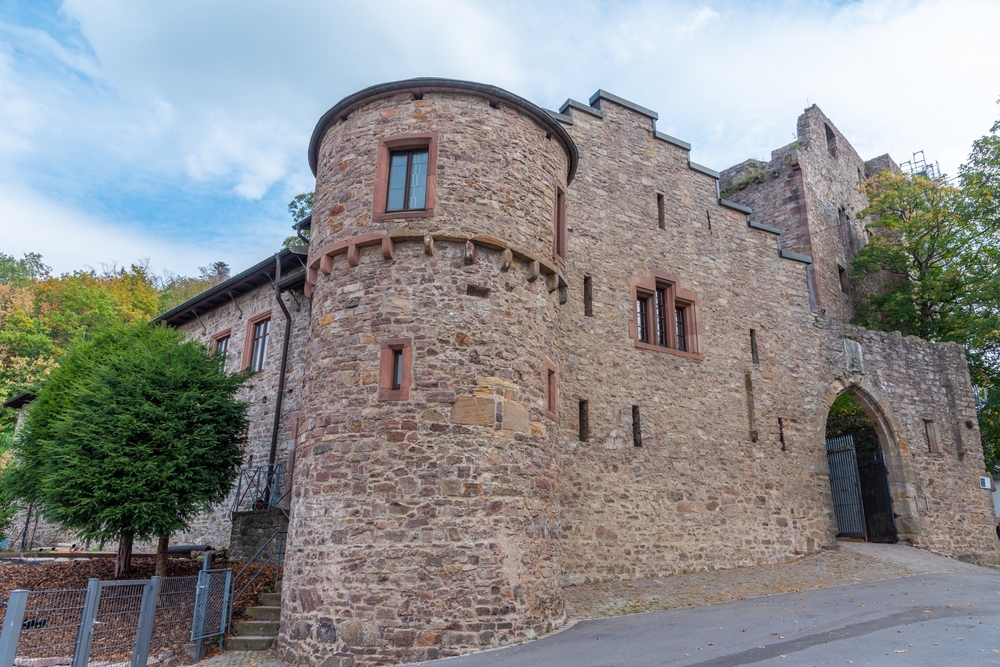
Schloss Hohenbaden, also known as Old Castle, is a ruined medieval castle located in Baden-Baden, Germany. It was built in the 12th century and offers visitors a glimpse into the past with its well-preserved towers and walls. The castle is open to the public, and visitors can climb to the top of the towers for beautiful views of the city and the Black Forest. The surrounding park is perfect for a relaxing walk.
The castle was once the residence of the Margraves of Baden and has been partially restored. It is not as large as some other castles in the region but has a unique charm and offers great photo opportunities. Schloss Hohenbaden is easily accessible from the town of Baden-Baden, making it a perfect spot for those exploring the region. The site remains one of the most popular attractions in Baden-Baden.
Peles Castle (Romania)
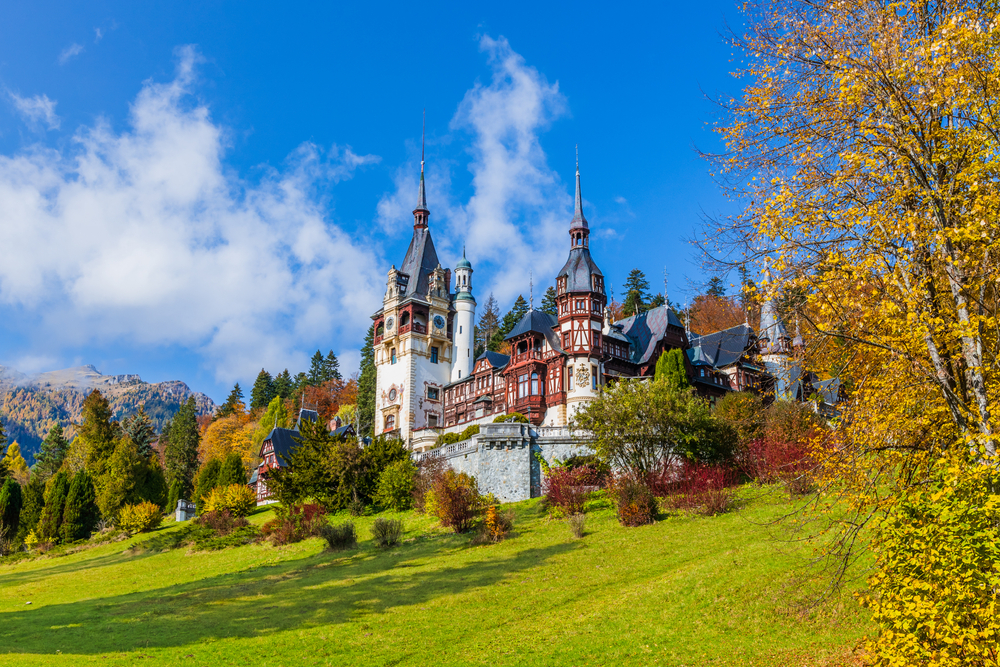
Located in the Carpathian Mountains, Peles Castle is a stunning neo-Renaissance castle built between 1873 and 1914 for King Carol I of Romania. Open to the public, it showcases exquisite architecture and impressive interiors, including over 170 rooms. The castle is nestled in a forest and offers breathtaking views of the surrounding mountains. It is one of Romania’s most visited tourist attractions.
Peles Castle was one of the first castles in Europe to have electricity, and it features advanced heating systems. Its rooms are decorated with fine art, sculptures, and furniture from various European countries. Visitors can take guided tours to learn about the history of the castle and its royal occupants. The castle’s beautiful location and intricate design make it a must-see in Romania.
Windsor Castle (England)
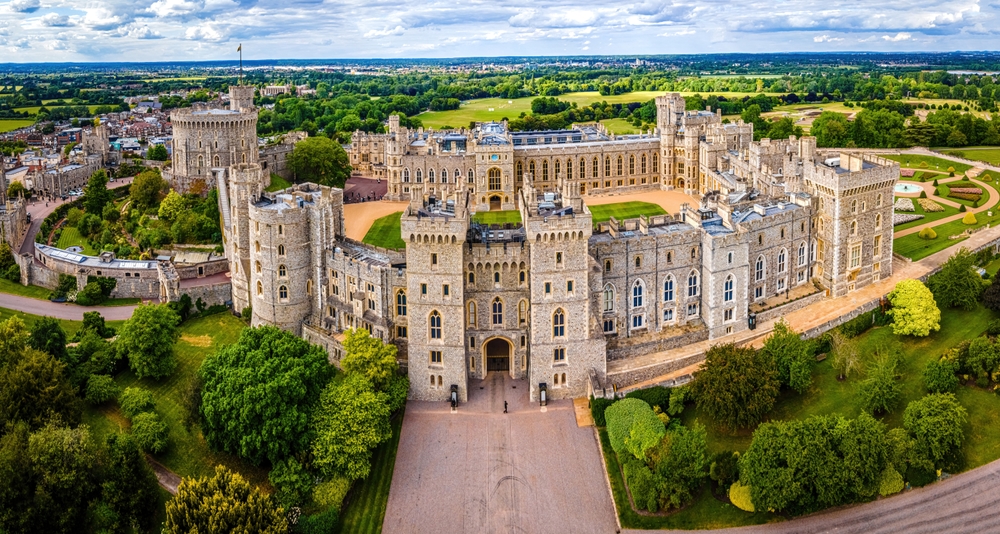
Windsor Castle is the oldest and largest inhabited castle in the world. It has been the residence of British monarchs for over 1,000 years. Located in Berkshire, England, it is open to the public and includes beautiful gardens and grand state rooms. The castle is still used by the royal family, with parts of it closed to visitors during official events.
Windsor Castle’s architectural style has evolved over the centuries, with influences from the medieval, Georgian, and Victorian periods. The castle covers about 13 acres and includes St. George’s Chapel, the burial place of many British kings and queens. It remains one of the most popular tourist destinations in the UK, with over a million visitors each year. A trip to Windsor Castle offers insight into British royal history and tradition.
Eltz Castle (Germany)
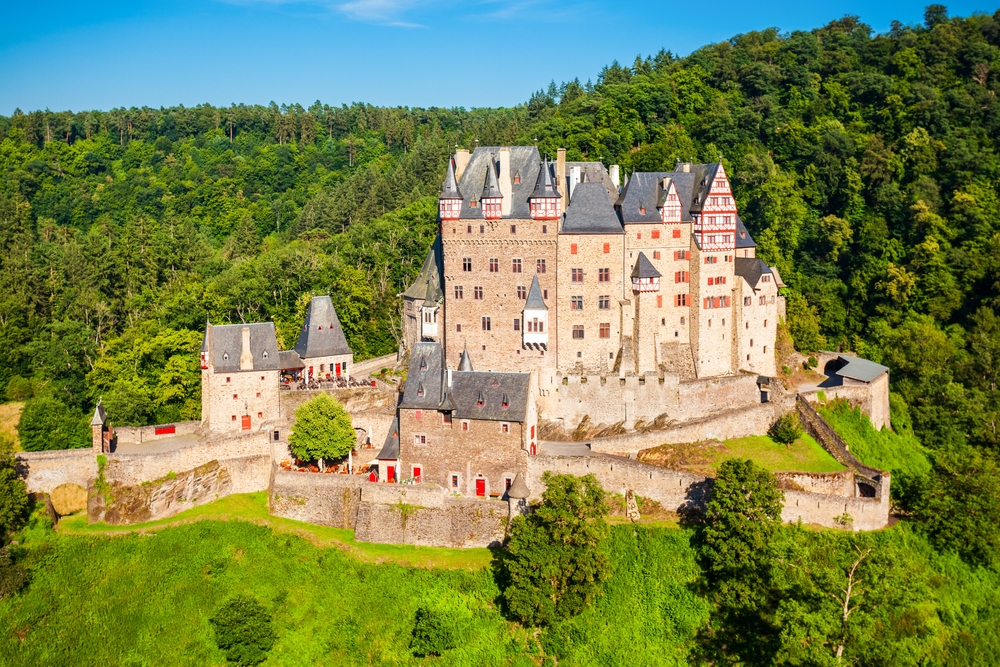
Eltz Castle is a fairy-tale castle nestled in the hills of the Eifel Forest in Germany. Built in the 12th century, it has been owned by the same family for over 800 years. The castle is open to the public, and visitors can explore its medieval rooms, weapons collection, and treasure chamber. The castle’s location along the Elzbach River adds to its enchanting atmosphere.
The castle has retained much of its original architecture and decor, providing an authentic medieval experience. It is relatively small compared to other castles in Germany but is stunningly beautiful. Eltz Castle is located about 50 kilometers from Koblenz, making it a perfect destination for a day trip. Its picturesque setting and historical significance make it a must-see site.
Miramare Castle (Italy)

Miramare Castle, located near Trieste, Italy, is a stunning example of 19th-century architecture. Built for Archduke Ferdinand Maximilian of Austria, the castle offers panoramic views of the Adriatic Sea. It is open to the public, with visitors able to explore its elegant interiors and surrounding gardens. The castle is surrounded by a park of over 20 hectares, providing a tranquil environment for visitors.
Miramare Castle was completed in 1856 and was the residence of the Austrian royal family until 1918. Its architecture is a mix of medieval and Renaissance styles, and the rooms are decorated with luxurious furniture and art. The castle’s seaside location adds to its beauty, making it a perfect spot for sightseeing and relaxation. It remains one of Italy’s most beloved castles.
Rheinfels Castle (Germany)
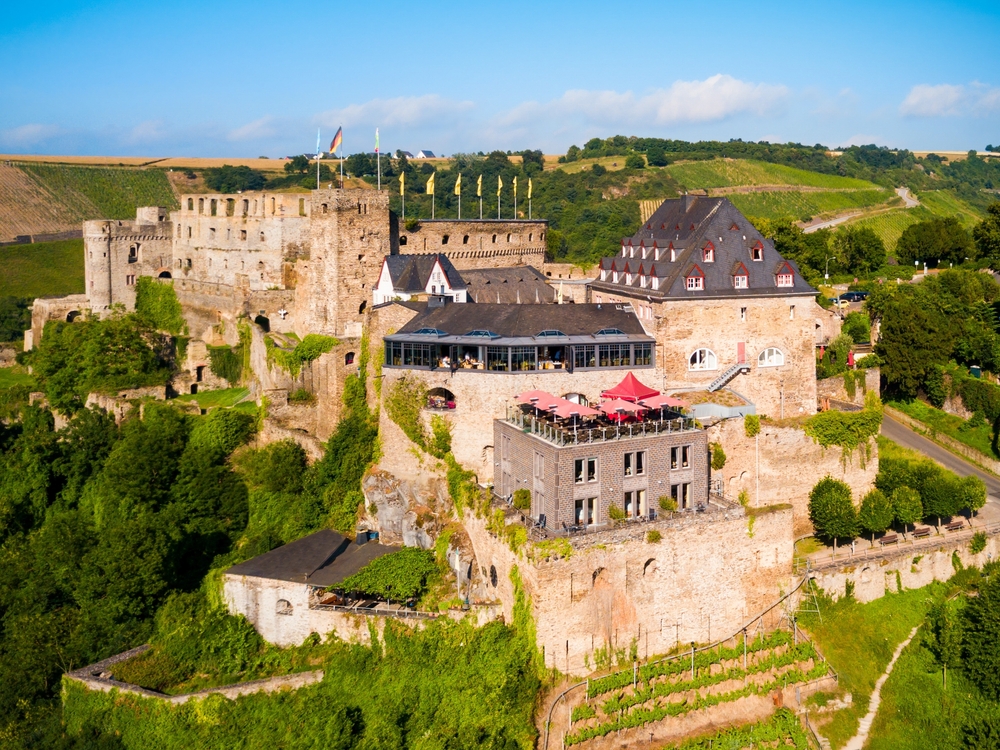
Rheinfels Castle, located on the banks of the Rhine River, is one of Germany’s most impressive castle ruins. Built in the 13th century, it was once one of the largest and most powerful fortresses in the region. The castle is open to the public, and visitors can explore its sprawling grounds and fortified walls. The castle’s strategic location offers stunning views of the Rhine and the surrounding landscape.
The ruins of Rheinfels Castle include impressive tunnels, ramparts, and towers, some of which have been preserved for visitors to explore. The castle also houses a museum, where visitors can learn about its history and military importance. Rheinfels Castle remains one of the most picturesque ruins in Germany, making it a popular destination for history enthusiasts and photographers.
Heidelberg Castle (Germany)
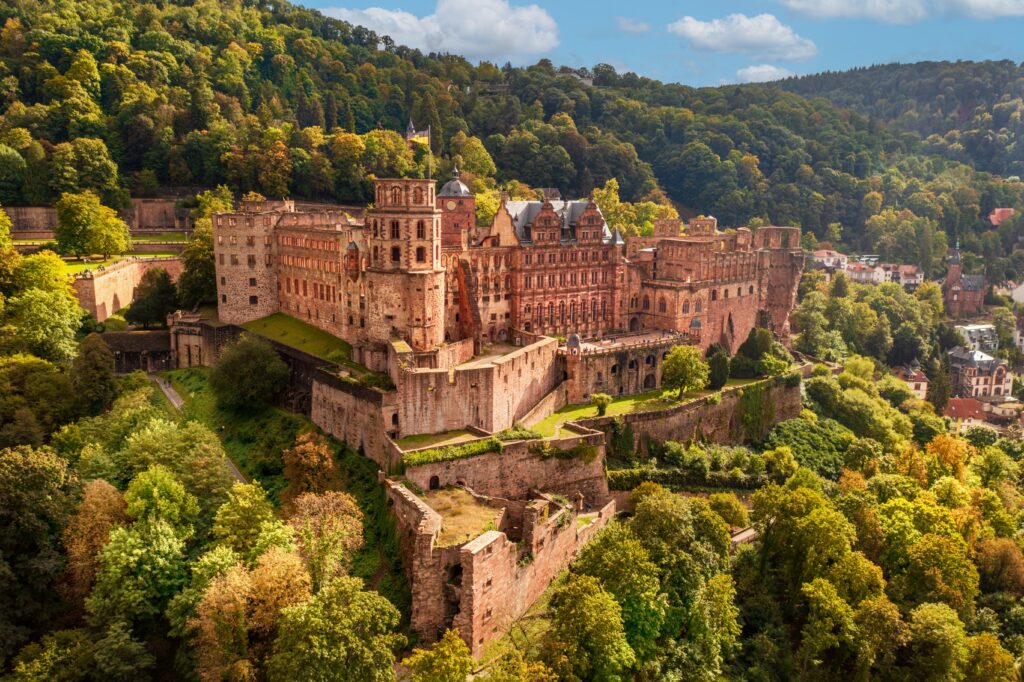
Heidelberg Castle is a stunning hilltop fortress overlooking the city of Heidelberg and the Neckar River. Built in the 14th century, it has been expanded and renovated over the years, resulting in a unique mix of architectural styles. The castle is open to the public, and visitors can explore its historic halls, gardens, and towers. It is one of Germany’s most famous castles and a popular tourist attraction.
Heidelberg Castle has witnessed many significant events throughout German history and has been the seat of several electors. The castle’s large courtyard and impressive ruins offer a fascinating glimpse into the past. Visitors can also see the world’s largest wine barrel, which is housed in the castle. The stunning views of Heidelberg from the castle’s grounds make it a must-visit destination in Germany.
Visiting Europe’s most stunning castles is an unforgettable experience, one that brings you closer to the region’s rich cultural history. From majestic fortresses to exquisite palaces, these sites offer something for every traveler. Plan your trip and immerse yourself in the fascinating world of European royalty and architecture.
This article originally appeared on Avocadu.
